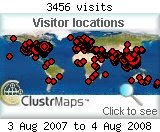By Jose Ma. Montelibano
INQUIRER.net
Last updated 01:59am (Mla time) 07/27/2007
MANILA, Philippines -- Last Monday, President Gloria delivered the State Of the Nation Address, or SONA -- the 7th time she has done so since 2001. Somehow, SONAs have become big political and media events. For whatever they are worth to politicians, SONAs have little impact on most ordinary Filipinos. If there are no protest rallies that turn bloody to accompany SONAs, the man on the street is largely oblivious to them.
More interesting, though, are the latest results of surveys on hunger. A substantial drop in hunger incidence was recorded nationwide, from 19-plus percent to 14-plus percent, except in Metro Manila, where the reverse was true. Whoever was responsible for easing hunger among our poor deserves to be positively recognized and encouraged to intensify anti-hunger programs.
I assume that local government officials in towns and provinces have the primary responsibility of pinpointing the perennial victims of hunger in the areas of responsibility. Apparently, the national agencies involved in providing emergency food supplies to the identified areas must have done their jobs effectively, too. I hope they will not relent in their efforts, no matter what the cost. They only have to maintain an acceptable level of efficiency.
Metro Manila poses a different problem because its configuration contrasts sharply with its rural counterparts. While probable victims of hunger as easily identifiable because of the visibility of informal settler colonies, or squatters as they are still more popularly known, the intervention cannot be the same.
By Mahar Mangahas
Inquirer
Last updated 03:11am (Mla time) 07/28/2007
MANILA, Philippines -- Hunger got one line in the State of the Nation Address: “And I am happy to see that the latest survey in June shows that the hunger rate has sharply gone down nationwide.” Its source was the SWS report published earlier that day, “Hunger declines significantly to 14.7 percent: moderate is 12.5 percent; severe is 2.2 percent.”
The decline in the June survey was by more than 4 points from the record-high 19.0 percent of households in the previous two surveys by the poll group Social Weather Stations (SWS) in November 2006 and February 2007.
The first time (July 1998) SWS measured involuntary hunger -- experienced by the household without having anything to eat at least once in the past three months -- the national figure of 8.9 percent was so shocking that SWS decided to make it a core indicator. Now, with 11.6 percent as the average in 37 quarterly surveys since then, one can see that hunger in July 1998 was actually below normal.
Given 17.7 million households in the Philippines, June’s 14.7 percent amounts to 2.6 million suffering households. The 12.5 percent who said they suffered only once or a few times (“moderate hunger”) are 2.2 million, and the 2.2 percent who suffered often or always (“severe hunger”) are 400,000.
Moderate hunger is still far above the historical average of 8.3 percent. On the other hand, thankfully, severe hunger is below its own historical average of 3.2 percent. The last time moderate hunger and severe hunger were at average, or better, was in March 2004.
The high frequency of SWS monitoring has revealed that hunger is not static but dynamic. It can even be volatile, changing by as much as five percentage points over a quarter.
There have been two full hunger cycles, with peaks in November 1998 (14.5 percent), March 2001 (16.1 percent), and November 2006/February 2007 (both 19.0 percent); and bottoms in October 1999 (6.5 percent) and September 2003 (5.1 percent). Researchers should find out what went right in periods of decline, and what went wrong in periods of increase, by considering food prices, general inflation, wage rates, unemployment, social welfare program operations, etc. In short, quit denying, and start studying. Otherwise, hunger-alleviation is just accidental.
Read the rest of the article here.
By Mahar Mangahas
Inquirer
Last updated 08:50pm (Mla time) 08/03/2007
STATISTICAL efforts. Last Tuesday morning, I attended the National Statistical Coordination Board's forum revealing a new "Hunger Index" done by the Interagency Task Force that it had created in 2006.
The Index turned out to be an average of: (a) the proportion of underweight children less than 5 years old; (b) the proportion of households deficient in food-energy intake; and (c) the mortality rate among children less than 5 years old. The latest period with official data available for these three components happens to be 2003.
The Task Force considered as "Low Hunger" any Index values of .256 or less. "Moderate Hunger" would be between .257 and .291, "Serious Hunger" would be between .292 and .326, and "Alarming Hunger" would be .327 and up. (The boundaries were based on a complex technique which is immaterial here.) Using equal weights, the Index for 2003 turned out to be .272, meaning "Moderate"; but using alternative weights recommended by the Task Force, it became .235, meaning "Low."
I commented at the forum that none of the Index's components was directly about hunger, and thus it ignored the National Nutrition Council's (NNC) one direct survey on hunger, in 2003 [see my column last week]. More importantly, however, the Task Force had no plans for doing the Index more frequently.
I likened this analysis of the 2003 data to archeology--normal for academics, but of little relevance to the present situation. The year 2003 was in fact the lowest or most favorable point in the SWS quarterly surveys on hunger. One relying only on official statistics wouldn't realize that hunger rose to record heights in late 2006 and early 2007.
Read the full report here.













0 comments:
Post a Comment